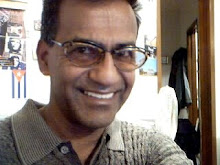
U.S. Obesity Rate May Hit 42% by 2050
By Kathleen Doheny
HealthDay Reporter by Kathleen Doheny
healthday Reporter Fri Nov 5, 11:48 pm ET
FRIDAY, Nov. 5 (HealthDay News) -- Despite reports that the rate of obesity among U.S. adults might be slowing down, a new projection from Harvard University and MIT suggests otherwise.
Instead, using a sophisticated model that views obesity like an infectious disease, the team predicts that adult obesity rates will rise for another 40 years before leveling out. And before reaching that plateau, 42 percent of adults will be obese, the team predict.
For the last few years, the U.S. Centers for Disease Control and Prevention has placed the adult obesity rate at 34 percent, with another 34 percent of Americans overweight but not obese.
"It's definitely true that the percent of obese people has slowed down," said study author Alison Hill, a graduate student in Harvard's Program for Evolutionary Dynamics, Biophysics Program. "But our results suggest it is not the end."
The study is published this week in the journal PLoS Computational Biology.
The prediction is a ''best-case'' scenario, said Hill and Dr. David Rand, a research scientist at Harvard who was also involved in the study. That means the obesity rate might rise even higher than 42 percent.
Obesity is defined as having a body-mass index (BMI) of 30 or higher. For instance, a person 5-feet-5 inches tall who weighs 200 pounds has a BMI of 33 and is considered obese.
The modeling was done after examining the spread of obesity via "social networks" in the long-running Framingham Heart Study Network. In the analysis, a social network includes family, co-workers, friends and neighbors. The spread of obesity among U.S. adults in recent decades due to social contacts can't be ignored, Hill and Rand said. That idea is based on the ''social contagion'' theory of obesity.
Under this theory, a normal weight person has a 2 percent chance of becoming obese in any given year, according to the researchers.
That number increases by 0.4 percent with each obese social contact a person has, meaning that a person with five obese contacts doubles his or her risk for obesity.
On the other hand, when it comes to losing weight, an obese adult has a 4 percent chance of losing enough to become just overweight in any given year, the team found.
But they didn't find that weight loss had much to do with social contacts. So an obese person who hangs out with normal-weight friends won't necessarily lose pounds because of those contacts.
Other factors play into the spread of obesity, Hill and Rand explained, including the rate of ''non-social transmission" of obesity, such as easier access to unhealthy foods, and the rate of ''recovery" from obesity, or a weight loss that puts people below a BMI of 30.
While the non-social transmission factors are still most important in the spread of obesity, Rand said, the role of social transmission has expanded in the past four decades.
Exactly why hanging out with obese people boosts one's risk of becoming obese isn't fully understood. One speculation, Rand said, is that over time, as we have become more and more connected via emails, Internet and social networking, the social transmission factor has naturally played a larger role. It could be, he said, that what is appropriate and ''normal" to eat changes if you have obese friends.
The findings have some public health implications -- suggesting ways policy makers might attack the obesity epidemic -- but also a message for individuals, said Hill.
"One good take-home point is it's actually in your best interest to help your friends lose weight," Hill said. "The more obese friends you have, the more likely you are to gain."
Another expert, James O. Fowler, professor of medical genetics and political science at the University of California San Diego, said the study, even with its dismal 42 percent obesity prediction, has some bright news.
"The good news here is that we may be reaching a high point in the obesity epidemic, and the authors' model is a useful framework for understanding how we can bring the rate of obesity back down," he said.
Fowler co-wrote a book on social connections with Dr. Nicholas Christakis, who is another co-author of the new modeling study with Hill and Rand.
More information
To learn more about overweight and obesity, visit the U.S. Centers for Disease Control and Prevention.
IF YOU ADD CANADIAN STATISTICS, SIX OUT OF THE SEVEN THINNEST STATES WOULD BE IN CANADA..
